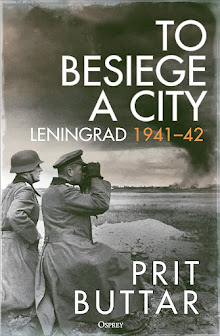As far as battlefield walking is concerned I take my opportunities when I can. One such opportunity arose last month during a weeks' holiday with my wife in the beautiful Yorkshire Dales. Mo's thoughts turned to shopping in Harrogate whilst mine turned to nearby Marston Moor, the place where the North of England was lost to the Royalist cause during the English Civil War. We managed to cover both but I'm guessing that my readership is going to be more interested in the latter than the former!
The battle was fought on the 2nd July 1644. Prince Rupert and the Earl of Newcastle had reinstated the kings' authority over the city of York the previous day. Both the Royalists and the opposing Parliamentarians gathered their forces at Marston Moor. The former force was outnumbered - the Royalist army consisting of 6,000 cavalry, 17,000 foot soldiers and 14 artillery pieces. The Parliamentarian force under the Earl of Leven, Lord Fairfax and the Earl of Manchester fielded a total of 22, 500 men, with material advantages across all arms.
 |
| The Monument at Marston Moor |
The monument in the picture is situated in the middle of the battlefield. The Royalist lines were a couple of hundred yards beyond the pillar. The Parliamentary lines were the other side of the modern day road on the forward slope of a low ridge. My walk took me down Atterworth Lane and then left along the tree line through the heart of the battlefield and into the area where Cromwell's cavalry had been so decisive in rampaging through Byron's wing and, with the help of the Scots, routing Prince Rupert's elite troops. The final act of the battle was the last stand of the Earl of Newcastle's 'whitecoats' where a plucky last stand took the Royalist casualties to over 4,000.
So, back to our Yorkshire holiday where a later trip to the lovely town of Skipton presented me with a chance to visit the the Norman Castle which still stands at the top of the High Street. Following the Royalist defeat at Marston Moor, Skipton held out against the Parliamentarians until December 1645.
 |
| Skipton Castle, Yorkshire |
The castle at Skipton was given up to Cromwell after a lengthy siege. Legend has it that sheepskins were hung from the walls to provide reinforcement against cannon fire. To this day sheep skins feature on the town coat of arms. The castle is a splendid place to visit nowadays. It's empty rooms echo with the voices of history though a substantial part of the building remains a private residence. Some years after the civil War, the owner, Lady Ann Clifford, sought Cromwell's permission to reinstate the roof which had been demolished after the siege to prevent the building being used for military purposes. Permission was granted and the castle is now topped with an ornamental parapet and a rather fragile roof - deliberately so, in order to ensure that this highpoint could not be used as a firing platform for artillery.












